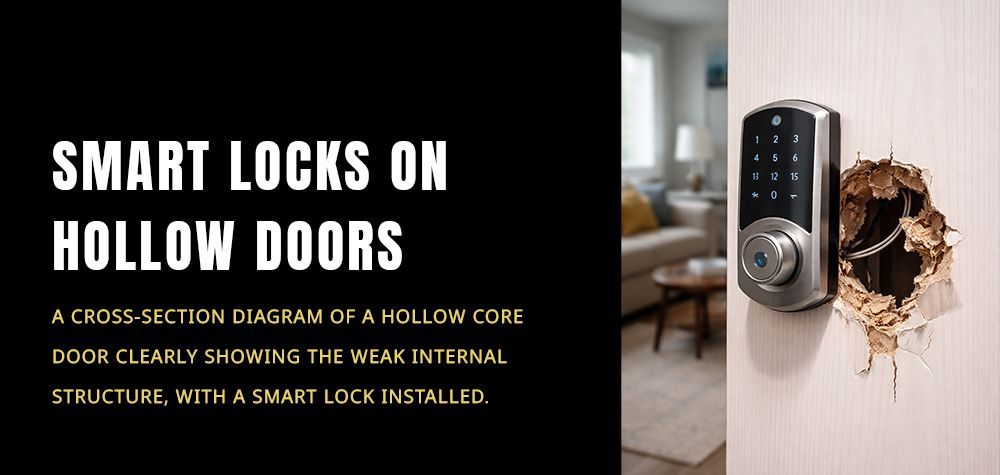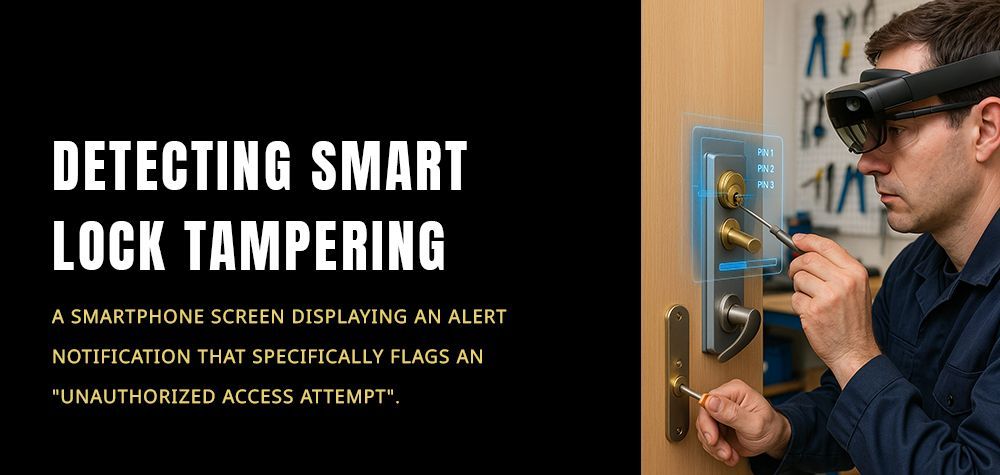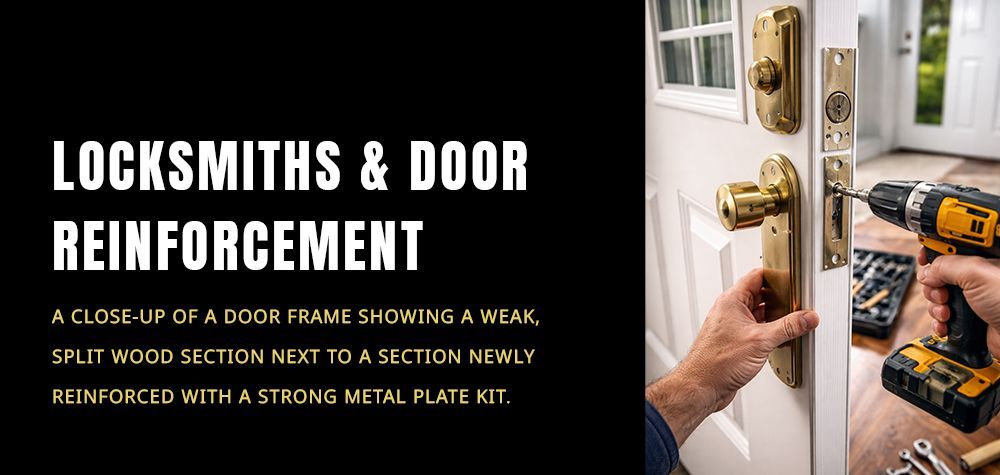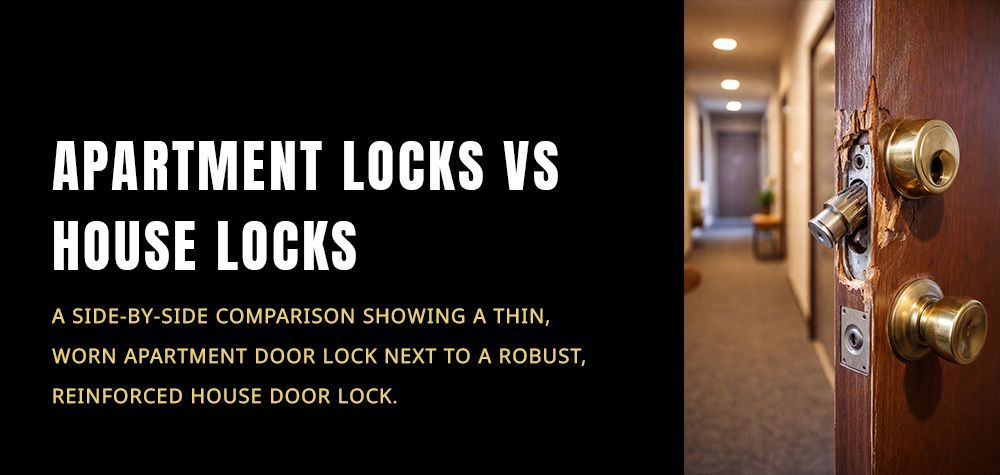How To Replace A Storefront Door Lock
Replacing a storefront door lock is crucial for maintaining the security and functionality of your business. Whether you're upgrading for better security, dealing with a malfunctioning lock, or changing the lock due to employee turnover, knowing how to replace a storefront door lock is essential. This guide provides a detailed, step-by-step approach to ensure your storefront remains secure and operational.
Why Replacing a Storefront Door Lock is Important
- Enhanced Security: Over time, locks can wear out, making them easier to pick or break. Replacing an old or worn-out lock ensures that your storefront is protected against unauthorized entry.
- Business Turnover: If a keyholder leaves your business, it’s wise to change the lock to prevent any potential security breaches.
- Compliance: In some cases, upgrading your lock may be necessary to meet updated safety and security regulations, ensuring your business complies with legal requirements.
- Damage Repair: A damaged lock can pose a significant security risk, making replacement essential to maintain the integrity of your storefront.
Types of Storefront Door Locks
Understanding the different types of locks used in storefronts can help you choose the right one for your replacement:
- Mortise Locks: Common in commercial settings, mortise locks are durable, secure, and offer a high level of security. They require a pocket to be cut into the door for installation.
- Cylindrical Lever Locks: Easier to install than mortise locks, these are often used in storefronts and office buildings. They fit into pre-drilled holes and are suitable for medium security needs.
- Deadbolts: Often used in conjunction with other locks, deadbolts provide additional security, especially against forced entry.
- Keyless Entry Systems: These locks use electronic keypads or biometric systems and are ideal for businesses that need to control access more efficiently.
- Electric Strike Locks: Often used with access control systems, these locks allow for remote access and are ideal for businesses that require frequent, controlled entry.
Tools and Materials You’ll Need
Before you start, gather the following tools and materials to ensure a smooth replacement process:
- Screwdriver (Phillips and flathead)
- Power drill and drill bits
- Tape measure
- Lock installation kit (if needed)
- Replacement lock set (compatible with your door type)
- Pencil or marker for measuring and marking
- Chisel (if needed for mortise locks)
- Safety goggles
Step-by-Step Guide to Replacing a Storefront Door Lock
Step 1: Choose the Right Replacement Lock
Select a lock that fits your security needs and door type. Make sure it’s designed for commercial use and matches the existing lock’s size and configuration.
Step 2: Remove the Existing Lock
- Unscrew the Existing Lock: Start by removing the screws from the interior side of the door using a screwdriver.
- Disassemble the Lock: Carefully pull apart the lock components, including the interior and exterior plates, the lever or knob, and the latch or deadbolt.
- Remove the Lock Cylinder: If applicable, use a key or tool provided with the lock set to remove the lock cylinder.
Step 3: Prepare the Door for the New Lock
- Inspect the Door: Check the door for any damage or wear around the lock area. Ensure that the door is structurally sound.
- Adjust the Door Holes: If the new lock requires different dimensions, use a drill or chisel to adjust the existing holes.
- Clean the Surface: Wipe down the door surface to remove any dust or debris.
Step 4: Install the New Lock
- Install the Latch or Deadbolt: Insert the new latch or deadbolt into the edge of the door. Secure it with screws.
- Attach the Exterior and Interior Plates: Align the plates with the holes in the door and secure them with screws.
- Insert the Lock Cylinder: If your lock has a cylinder, insert it according to the manufacturer's instructions and secure it in place.
- Test the Lock Mechanism: Before final tightening, test the lock to ensure smooth operation. Adjust as needed.
Step 5: Final Adjustments
- Tighten All Screws: Ensure all components are securely fastened.
- Adjust the Strike Plate: Align the strike plate on the door frame to ensure the latch fits snugly. Secure it with screws.
- Test the Door Functionality: Open and close the door several times to make sure the lock operates smoothly and the door closes securely.
Common Challenges and Solutions
- Misalignment: If the lock doesn’t align with the strike plate, adjust the strike plate position or shim the door hinges to achieve proper alignment.
- Stiff Lock Mechanism: Lubricate the lock with a graphite-based lubricant to ensure smooth operation.
- Incorrect Door Preparation: If the new lock doesn’t fit the existing holes, consider using a lock installation kit or hire a professional locksmith to modify the door.
Maintenance Tips for Storefront Door Locks
- Regular Cleaning: Clean the lock mechanism regularly to prevent dirt and debris from causing malfunctions.
- Lubrication: Periodically apply a lubricant to the lock's moving parts to ensure smooth operation.
- Routine Inspections: Check the lock periodically for signs of wear or damage, especially after heavy use or extreme weather conditions.
When to Call a Professional Locksmith
While replacing a storefront door lock can be a DIY project, there are situations where professional help is advisable:
- Complex Lock Systems: For electronic or keyless entry systems, professional installation ensures proper setup.
- Security Compliance: Professional locksmiths can ensure that the lock installation meets commercial security standards.
- Time-Sensitive Needs: If you need the lock replaced quickly and efficiently, a professional locksmith can get the job done with minimal disruption to your business.
FAQs
Q1: Can I replace a storefront door lock myself?
Yes, with the right tools and instructions, replacing a storefront door lock can be done by most business owners. However, for complex or high-security locks, professional assistance may be necessary.
Q2: How long does it take to replace a storefront door lock?
Replacing a storefront door lock typically takes between 30 minutes to an hour, depending on the complexity of the lock and door preparation.
Q3: What should I do if my new lock doesn’t fit the existing door holes?
If the new lock doesn’t fit, you may need to modify the door using a drill or chisel. Alternatively, consider hiring a professional locksmith to ensure proper installation.
Q4: How often should I replace the locks on my storefront?
Locks should be replaced if they show signs of wear, after a security breach, or when upgrading to a more secure system.
Conclusion
Replacing a storefront door lock is a crucial task that directly impacts the security of your business. By following this detailed guide, you can ensure that your new lock is installed correctly and functions smoothly, keeping your business safe from unauthorized access. Regular maintenance and timely lock replacements are key to maintaining a secure storefront, giving you peace of mind as you focus on running your business.
Call Us Any Time!







